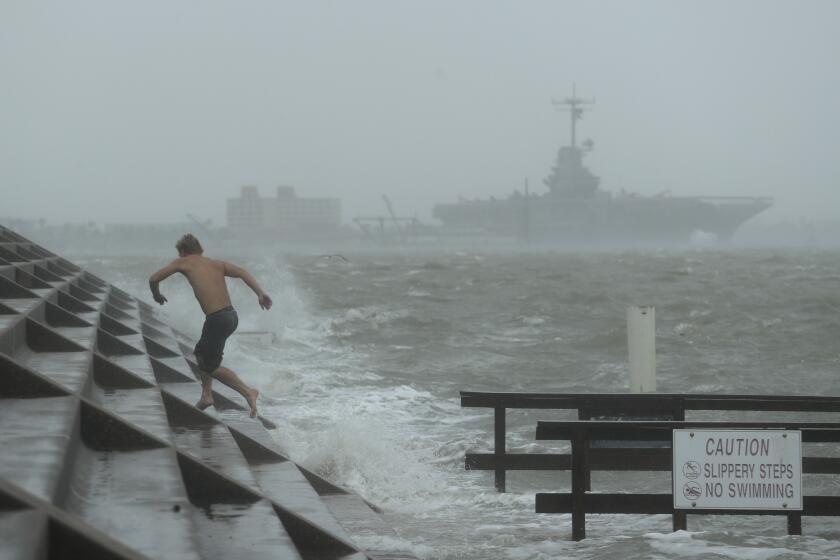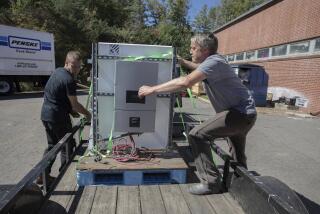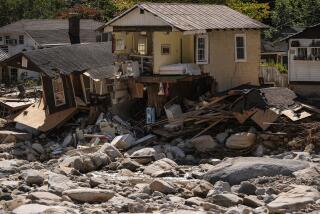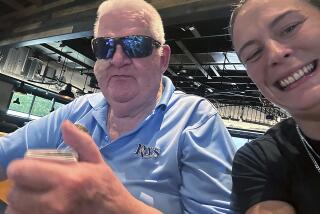Tropical Storm Hanna drenches south Texas amid virus crisis
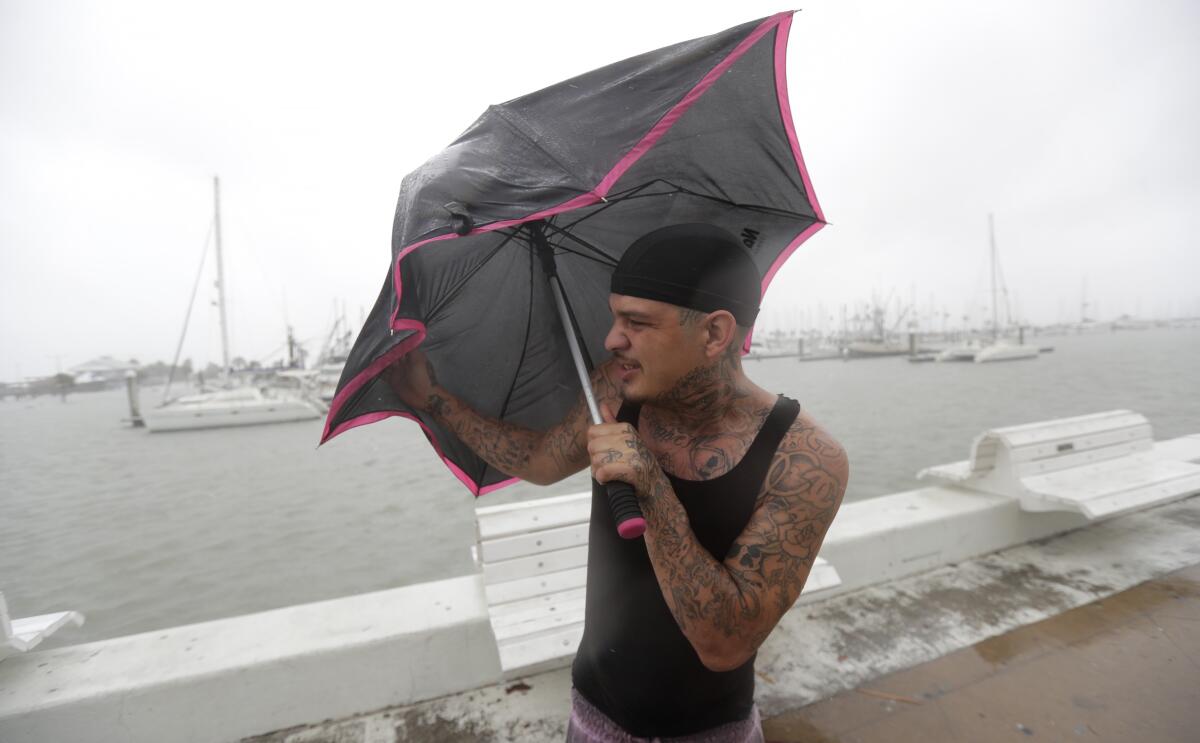
- Share via
CORPUS CHRISTI, Texas — A day after roaring ashore as a hurricane, Hanna lashed the Texas Gulf Coast on Sunday with high winds and drenching rains that destroyed boats, flooded streets and knocked out power across a region already reeling from a surge in coronavirus cases.
Downgraded to a tropical storm, Hanna hovered over the U.S.-Mexico border in the morning with winds near 50 mph, the National Hurricane Center said. It unloaded more than 12 inches of rain on parts of South Texas and northeastern Mexico.
Border communities whose healthcare systems were already strained by COVID-19 cases — with some patients being airlifted to larger cities — found themselves under siege from the first hurricane of the 2020 Atlantic season. There were no immediate reports of deaths on either side of the border.
Dr. Ivan Melendez, the health authority in Hidalgo County, Texas, was treating a patient overnight at a hospital when he and a nurse noticed water streaming down a wall and pooling on the floor. The water was flowing through a vent in the room, which had been retrofitted with a fan to create negative pressure and prevent the virus from spreading through the hospital.
After driving home in the storm in the middle of the night, Melendez was trapped Sunday morning in his home by downed trees and had no electricity. He used the phone to discuss whether to put a 58-year-old woman on a ventilator, a decision he felt uncomfortable making without seeing the patient in person.
“You look at the people’s eyes,” he said. “You’ll know if they’re in despair.”
Another doctor decided to place the woman on the ventilator, he said later.
Henry Van De Putte, chief executive of the Red Cross’ Texas Gulf Coast chapter, said the organization would open more shelters with reduced capacity to ensure social distancing. Volunteers and people seeking refuge will undergo temperature checks, and a medical professional will be assigned to each location, he said.
A community building known as the “Dome” in Mercedes, Texas, was set aside for evacuees who had tested positive for COVID-19 or were exposed to the virus. Across the region, shelters were opened in hotels, schools and gyms.
Van De Putte emphasized that people should not delay seeking help because of the virus.
“Yes, coronavirus provides risk, but so does floodwater, so does not having electricity, so does not having required medications,” he said. “We’re doing everything we can do possible to make it a safe environment.”
In Mexico, four people were missing — one in Topo Chico, Nuevo Leon, and three in Reynosa, Tamaulipas — and 22 people were in shelters in the Mexican border city of Reynosa, according to a statement from the Security and Civil Protection agency.
In Reynosa, a maternity hospital was damaged by heavy rain, and water had to be pumped out, authorities said. Some patients had to be moved to upper floors, and a few were evacuated to other hospitals, said Pedro Granados, director of civil protection for Tamaulipas state.
Coastal states scrambled this spring to adjust emergency hurricane plans to account for the coronavirus, and Hanna was the first big test. Texas Gov. Greg Abbott said Saturday that some people in need of shelter would be given hotel rooms to keep them apart from others.
Hurricane Hanna is rumbling through the Gulf of Mexico toward Texas, which has been dealing with a surge of coronavirus cases in recent weeks.
The first hurricane of the 2020 Atlantic season blew ashore as a Category 1 storm late Saturday afternoon with winds of 90 mph not far from Port Mansfield, which is about 130 miles south of Corpus Christi.
Myrle Tucker, 83, tried to ride out the storm in a powerboat docked in a Corpus Christi marina. But winds and rain blew out the vessel’s windows. Eventually, rescuers in a dinghy were able to reach him and bring him to shore. Many other boats were flooded and lashed by the storm.
Tucker said he told his rescuers he wasn’t sure he would be able to climb out of his boat.
“They picked me up,” he said. “They carried me like a box of napkins.”
More than 150,000 customers lost power Sunday throughout South Texas, in cities including Corpus Christi, Harlingen and Brownsville, utility officials said.
Corpus Christi is in Nueces County, where health officials made headlines when they revealed that 60 babies had tested positive for COVID-19 from July 1 to July 16. Farther south, in Cameron County, more than 300 new cases have been reported almost daily for the last two weeks. The past week has been the county’s deadliest of the pandemic.
Hanna came nearly three years after Hurricane Harvey blew ashore northeast of Corpus Christi. Hanna was not expected to be as destructive as Harvey, which killed 68 people and caused an estimated $125 billion in damage in Texas.
In the Mexican city of Matamoros, across from Brownsville, the rains shook tents in a refugee camp housing an estimated 1,300 asylum seekers, including newborns and elderly people. They have been waiting for months for court dates under a U.S. immigration policy that requires them to remain in Mexico.
More to Read
Sign up for Essential California
The most important California stories and recommendations in your inbox every morning.
You may occasionally receive promotional content from the Los Angeles Times.
